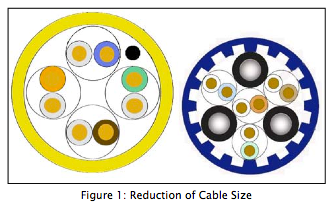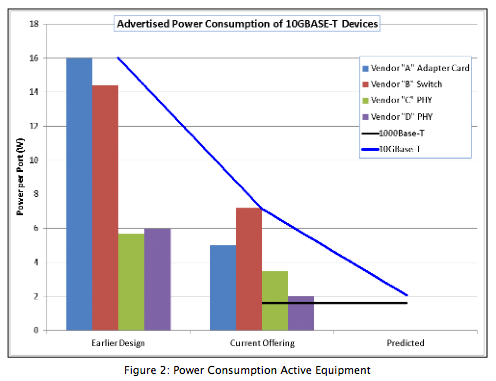As datacenter's continue to improve, transitioning to the latest technologies will always become a necessity. 10GBase-T, or 10 gigabit ethernet, has been developing over much of the past decade, and is now starting to transition into the mainstream use replacing 1GBase-T or 1000Base-T. While power consumption still remains the biggest issue for 10GE twisted-pair copper, continual improvements to the components of the system have improved connectivity density.
The Beginning of 10GBase-T
10 gigabit ethernet really started to turn heads in 2006, when the Institute of Electrical and Electronics Engineers (IEEE) published a set of standards in relation to 10GBase-T products. Since 10GBaset-T is data that is transmitted through copper based links, it is understandable that this 2006 release was prompted by the publication of findings about fiber optic 10G standards. To remain competitive, the copper technology had to improve drastically, since one-gigabit links were already becoming the accepted standard.
Early versions of the 10GBaset-T technology were sub par, as with any technology. There were size concerns, heat generation and power consumption, which are issues that have been by and large mitigated through continual refinements of the technologies. Due to these drawbacks, applications using this higher speed uplinks leveraged plug and play capabilities- so that the savings on installation and the cost effective approach of category cable would keep it competitive.
The Early Forms of 10GBaset-T
The three main developments during the early years of 10GBaset-T included CX4, SFP+ and of course, UTP cables.
UTP – Standing for “Unshielded Twisted-Pair” cables, this form of category 6A cable was expressly developed to handle larger performance loads, and to decrease external/alien/cross-talk performance. This was initially achieved with cables that were much larger due to the extra material, although successive generations and innovations have reduced size and cost of Cat 6A while maintaining 10GBaset-T performance.

Two big issues that had to be overcome early on in the development stage were coordinating the different channels of manufacturing, and power consumption reduction. The Data Communications Competence Center (DCCC) worked towards industry improvements, after finding that components that were compliant individually wound up failing when in certain combinations. The power consumption initially required the maximum 25 Watts provided by a PCI Express slot, which was enormous and required a lot of additional equipment to cooling. Current generations have managed to bring this down to less than 5 Watts per port, a great feat of reduction.
CX4 – Utilizing a multi-pair, twinaxial cable with individually shielded pairs, the CX4 cable was more complex in material, but simpler in the overall communications scheme. Transmission was available over a wider spectrum because of the extra shielding, and resulted in lower power consumption and latency. The drawbacks wound up being the larger cable diameter and limitations of density, as well as the maximum usage length of about 15 meters.
SFP+ - Enhanced small form factor pluggable solutions made inroads due to the low market cost, small size, and comparably lighter power consumption. The interchangeable modules allowed a great array of flexibility as well. The length of common cable assemblies has continued to be an issue though, as these are often only available in lengths under 15 meters.
Overall, the CX4 and SFP+ solutions continue to provide and important function in datacenter's, however the reach limitations highlight a key strength of the 10GBaset-T solution.
10GBaset-T Now

Power consumption continues to improve as all components in the system improve. One of the biggest leaps forward has been the miniaturization chips, reducing widths from 90nm on average in 2006 to less than 40nm on current products – with further reductions expected down to 28nm and 22nm in the near future. Across all areas though, 10GBASE-T components have advanced from conception to readiness. Power consumption, a major factor impeding 10GBASE-T technology adoption has been addressed through lithography, LOM, EEE and short reach modes. With the implementation of LOM on the server, the adoption of 10GBASE-T is expected to accelerate and become the predominant media for 10G applications in the data center. Twisted pair cabling used in 10GBASE-T is effective, simple, and flexible. The early issues with alien crosstalk, power, and heat have been addressed. All of the network components, from the physical media to the circuitry in the servers, have been upgraded and fine-tuned for 10GBASE-T applications. Only 10GBASE-T has this combination of reach, backwards compatibility, and energy-saving features in a 10 gigabit Ethernet solution.
For more information on the latest Cat 6A cable and other telecommunications equipment, please contat your closest Accu-Tech representative today.


.png?width=58&height=58&name=X_logo_2023_(white).png)
